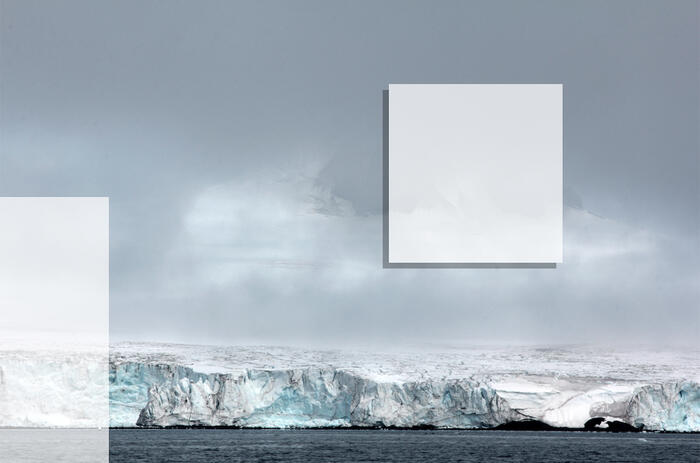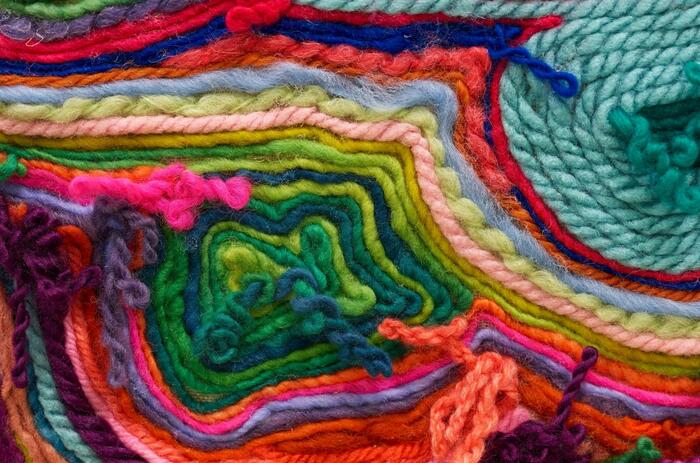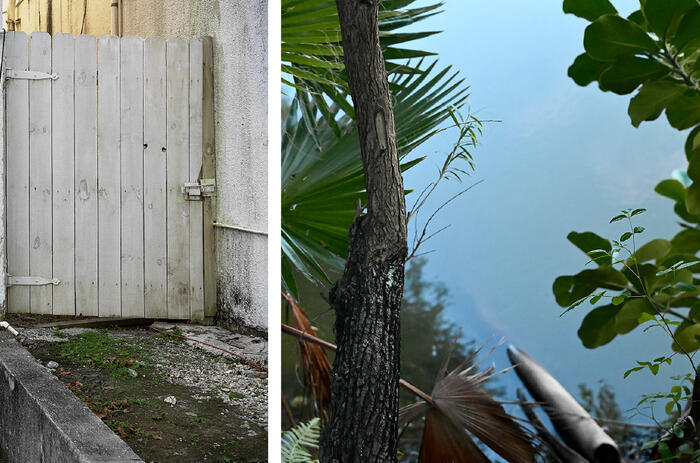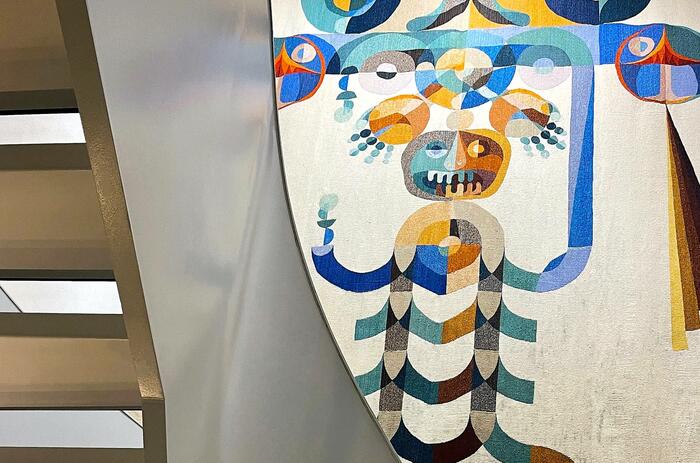HYPERLEAK. PAST → PRESENT ← FUTURE
The exhibition HyperLeak at Diana Lowenstein Gallery brings together two artists, Alex Trimino and Felice Grodin, who, through installation, moving image, and sculpture, collectively engage with material to understand different experiences of time as a poetic proposition towards redefining our relationships with ecosystems.
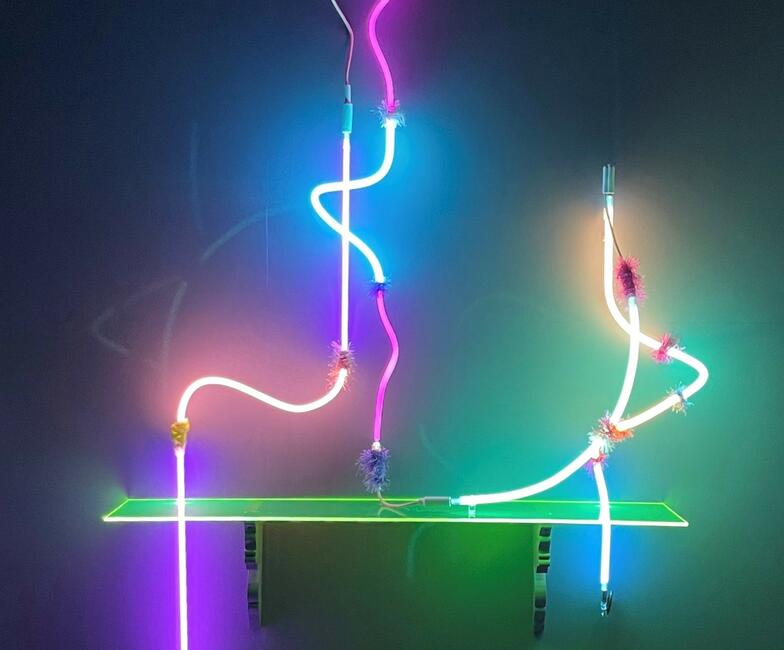
When I look towards the night sky, I see the past. This is not a poetic gesture, but a simple fact—the light we perceive was projected toward us hundreds of millions of years ago, and will continue past human existence—yet we decipher it in the present. The Western construction of time—the one that defines past, present, and future as a linear continuum, the one that synchronizes my phone, your calendar, and a digital clock by using atomic forces—fails to explain temporal entanglements. As I look from the future, I am entangled with a present that has yet to manifest, and a future that may never come. Faced with the impossibility of grasping the depth of time horizons, certain modes of knowing fall short. Significantly insufficient is the knowledge that humans are both separate and integral to ecosystems, much less in control of them.
A hyperobject, according to philosopher and writer Timothy Morton, are things that can be studied, thought about, and computed, yet are not easy to see, touch, or experience. They are massive and abstract ideas made evident through data aggregation, such as with climate change or the internet, nevertheless, they are as real as the weather or an ethernet cable. They exist across incomprehensible amounts of time—they are unfixed, fluid, and inconsistent. Hyperobjects are experienced in phases, perceived as a series of events in a sequence, separated by durations of various lengths. However, the timescales may be humbling in that they force us to realize how close to earth we really are; they offer a “very long finitude.” [1] It is far easier to romanticize an indefinite forever, than it is to imagine a future ten thousand years from now.
HyperLeak departs from Morton’s understanding of the hyperobject to describe a shifting set of present moments where nature and technology contaminate one another. This exhibition aims to describe the dialectical relationships between the natural and the technological, impacted by the hyperobject leaking from multiple presents. To do this, Trimino’s and Grodin’s individual bodies of work forge an artistic language informed by algorithmic thinking, a step-by-step mathematical procedure of instructions that solve problems with a computer. Like the hyperobject’s time horizon, the precise set of instructions describes a computation that eventually produces an output through a finite number of well-defined successive states. Trimino and Grodin integrate thought and emotion with materials informed by the presence of algorithmic geometric patterns. However, they enter the time horizon from two distinct presents: Trimino from the past and Grodin from the future.
PAST PRESENT
Artist Alex Trimino’s work reflects a collision between past and present narratives through the patterned geometry of natural and synthetic materials. Departing from the Colombian indigenous tradition of weaving passed down through her family, the artist often collects and cuts textiles and places them in conversation with technological, commercial, and readymade objects. As a result, Trimino’s sculptures and installations are characterized by natural materials such as wood, crochets, weaves, and industrial materials such as cables and hand-painted fluorescent tubes in varying lengths and colors. Her practice incorporates an analysis of form, and the relationship textiles and technology have to mathematical concepts, where the inherent dynamics of specific materials form the locus of the art. Like logic or geometry, her oeuvre describes the temporal configurations entangled within historical and present-day forces found in the narratives revealed by these materials.
The works in this exhibition engage with the geometric patterns of the Wayúu weavings from Guajira, Colombia, a practice only used by women, where weavings represent an account of the universe's origins. Through the geometric patterns of the weavings, Trimino explores the mystical narratives these materials carry outside the systems of codified rational knowledge. In her work, the geometric patterns of the weavings reconfigure the narrative around the technology, where the hierarchy between nature and technology is deconstructed, forming a different set of outcomes. Much like the Wayúu woman seek to encounter the divine through their vibrant weavings, Trimino asserts a relation to conceptual math in both the natural and technological, which fuses the past and the present. Her work leaks through the cracks of the present only to reveal far stronger historical connections than anticipated.
FUTURE PRESENT
Historically, humans have developed and used technology as a form of conquest over people and nature. We have deforested land to build railways and roads, terraformed coasts to create more land to inhabit, and increased transportation by airplanes and cars to the point of extreme weather fluctuations. The distant future may be too overwhelming to imagine, especially in the context of climate change with its rising waters and burning fires. In this exhibition, however, artist Felice Grodin looks to the future to reconceptualize our relationships with material objects and environments to include other species and technological advancements.
Drawing from her background in architecture, Grodin continues her investigation into the pervasiveness of invasive species within unstable urban ecosystems impacted by the human-made consequences of climate change. In her most recent body of work, Hybrids (2021), Grodin has created a series of speculative drawings rendered through AutoCAD, a commercial computer-aided design software application. Hybrids illustrate a speculative organism that has mutated, reproduced, and spread aggressively across the South Florida landscape. This new species invaded a future where nature and technological advancement have merged at the hands of human activity.
Representing the urban environment that prefigured the Hybrids are nine 3D printed sculptures, titled 3D_assets (2018). Initially commissioned for the 2018 exhibition E-State Realisms at Oolite Arts, Miami, Florida, 3D_assets comments on the systemic implications of real estate where neoliberal finance and culture intersect. While sea-level continues to rise and the wetlands toxify in the background, urban development proliferates and further displaces humans and nature. Through this work, Grodin traces the potentials of digital design at varying scales that take place both immaterially and materially. Hybrids and 3D_assets incorporate a complete folding of the digital and the real.
HyperLeak
September 4th – October 31st, 2021
Diana Lowenstein Gallery
326 NE 61st Street
Miami
[1] Timothy Morton, Hyperobjects: Philosophy and Ecology After the End of the World (Minneapolis: University of Minnesota Press, 2014) 60.

